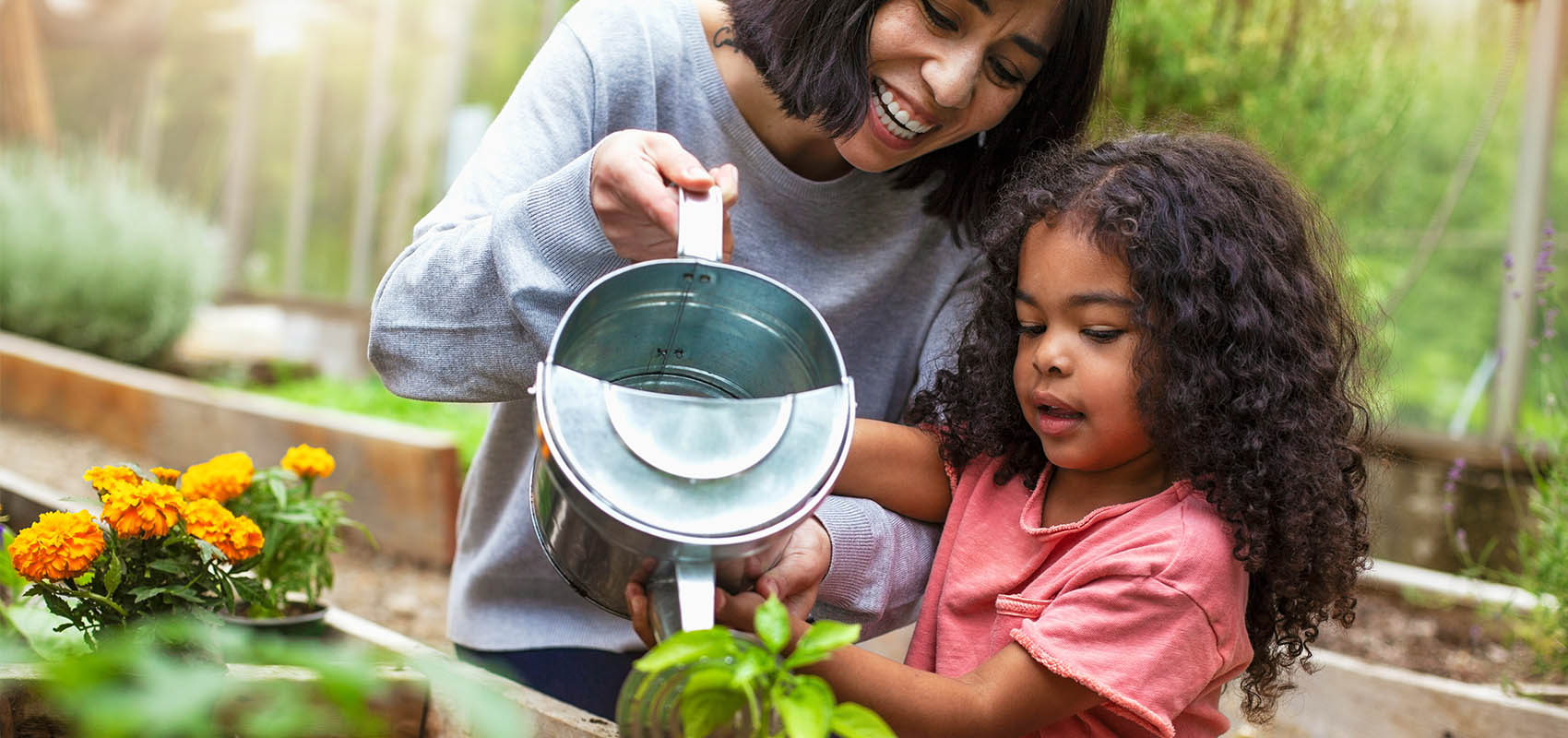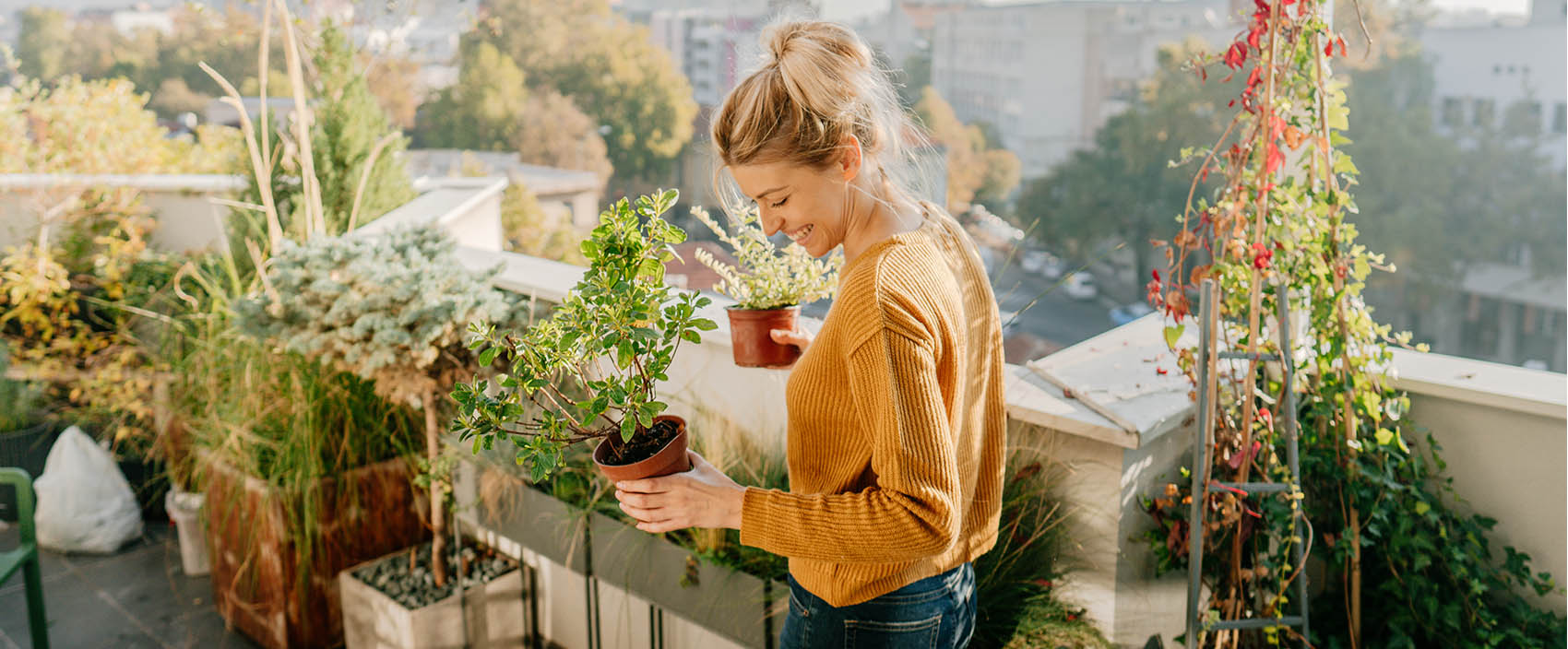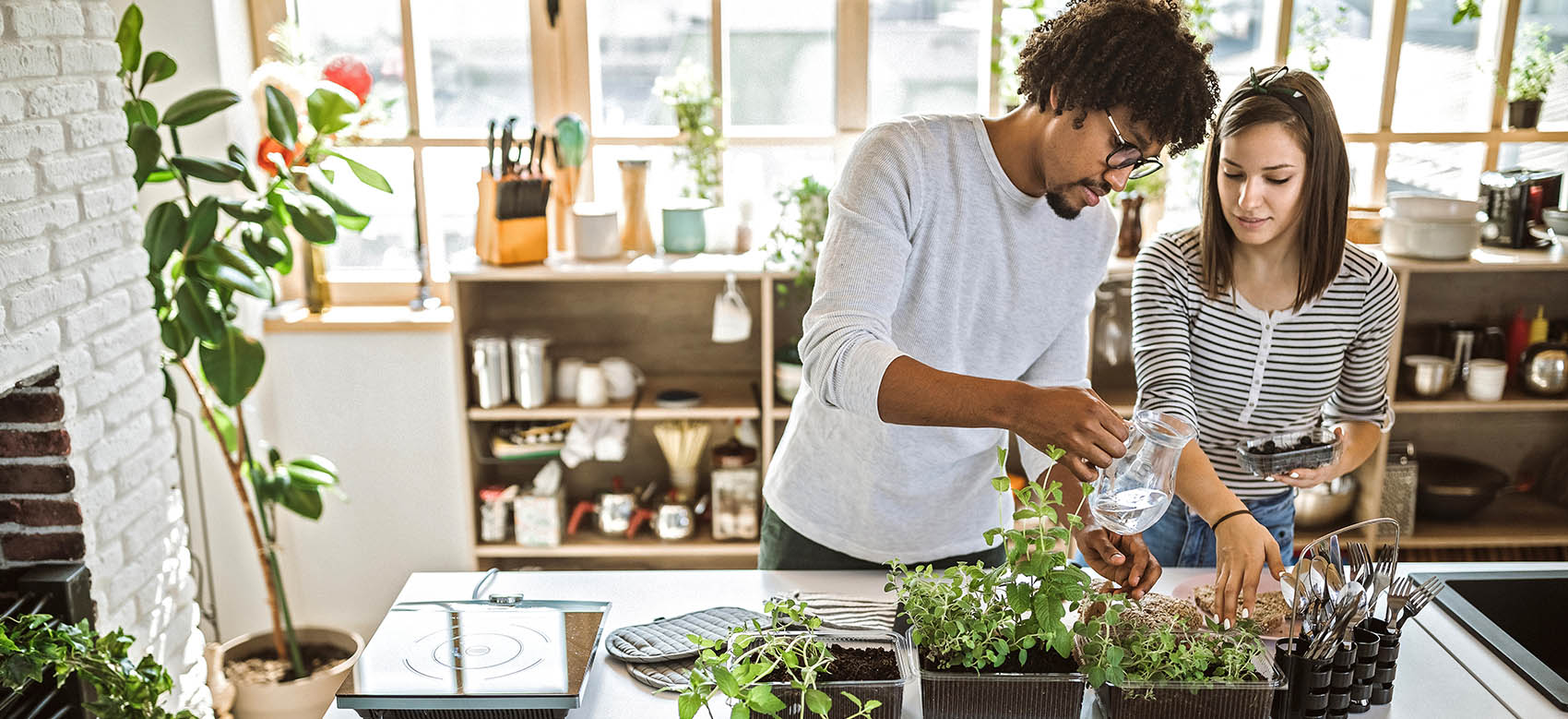Grow a green thumb this spring: beginner tips
This year, more and more people have discovered the joy of gardening. If you too love the idea of growing produce, herbs or merely nurturing a few succulents but aren’t sure where to start, look no further.
We’ve rounded up some easy-to-follow tips from BC-based gardening experts and our BCAA Team Members to help you on your way. Because whether it’s an outdoor vegetable garden or indoor jungle you aspire to, gardening is good for the soul, can relieve stress and is an excellent social-distancing-friendly activity. And, with sunnier days ahead of us, now is a perfect time to roll up your sleeves and get your hands a little dirty.
Start planning now for summer
If you're thinking about growing vegetables in your backyard or patio garden this summer, start planning now. For many varieties of vegetables, you can start sowing the seeds indoors first to ensure that the seedlings are ready to go out in the garden as soon as the weather outside warms up. Whether your space is big or small, the recipe for happy plants (and a happier you!) is the same: good sunlight, water, nutritious soil and some TLC. Here are some basic gardening tips to help you grow a green thumb of your own this spring.

Outdoor gardening
If you have a yard or space for a garden plot, put fresh vegetables on your plate this summer by planting seeds now. A great piece of advice from Amanda at Cedar Rim Nursery is to grow what you like to eat! If you don’t like zucchini, don’t grow it – it’s a lot of work for something you won’t enjoy, and you’ll be less enthusiastic about it. Here are a few more of her gardening 101 tips:
- Pick a sunny location with good drainage. Very few veggies can tolerate shade, so ample sunlight is vital. Proper drainage is also key. Wet soil means wet roots, which can turn into rotted roots. Safety tip: Remember to safely turn off or disconnect your hose and sprinklers to prevent an overflow of water. Speak with your insurance advisor to ensure you have adequate water coverage in case water works its way through any weak spots.
- Make sure you have nutritious soil in your garden. If you are starting from scratch, use a soil blend that is specific for veggie gardens. And ensure to feed your plants regularly. Adding compost to existing garden beds is always recommended.
- Start with easier to grow veggies. A few easy to grow and delicious veggies include carrots, lettuce, sweet peas, peas, squash (zucchini, butternut, spaghetti), beans (pole), corn (if you have space) and radishes. Pro tip: plant some Marigolds along the edge of your garden. Not only do they add some colour, they help deter pests.
- Stagger your planting. If you’re starting from seed, plant every few weeks instead of all at once. This will enable you to harvest over a longer window and enjoy the fruits (or vegetables) of your labour all season long. For example, if you plant all your lettuce seeds simultaneously, all that lettuce will need to be harvested at around the same time!
- If seeds seem daunting, start with starter plants. While not everything is available, most veggies are. They’re typically available starting late March (depending on where you live).
- Fertilize! Garden Centers have specialized fertilizer depending on what you are growing. Lean on their expertise as specialized fertilizer will help grow healthier and bigger veggies.
- As the season goes on, monitor your garden regularly for unwanted visitors. Keep an eye out for pests, but don’t panic if you see something. There are many eco-friendly options to solve the problem, and your local garden center can help you find the best solution.

Patio gardening
If you live in a condo or townhouse, don’t let your small space deter you from starting a garden of your own. According to Amanda, there are also ton of great options for container gardening now. Here are a few tips to make the most of your patio.
- If you don’t have space on the ground, go up! You can plant things like strawberries, cherry tomatoes, peas, beans, lettuce in hanging baskets. You can also stack pots to get more out of the same square footage. To give it a more aesthetically pleasing look, you can always plant a few edible flowers in the baskets, such as Nasturtium, Pansies, or Marigolds.
- Patio potatoes – yup! Just because you have a small space, it doesn’t mean you can’t grow veggies that are stereotypically for large yards. Potatoes, for one, can be grown in a pot on the patio, and there are even specialized potato pots that make harvesting a breeze. Here’s a list of vegetables that grow well in containers.
- Not into veggies? Try growing a columnar apple tree. They do well in pots on patios and stay less than 2’ wide. Other options for fruits that do well in pots are blueberries and honeyberries.
- Herbs are great for containers. Place them somewhere convenient, so when you're cooking, they're easy to grab. If they're not close by and convenient, you may forget to use them, making an accessible patio the best choice.
Indoor greenery
Growing a kitchen garden is a great option if you don’t have any outdoor space. It’s possible to grow edible plants like basil, chives, oregano, parsley, rosemary, sage and thyme indoors all year round. Just make sure you put them in a sunny location (ideally near a south-facing window) that gets as much sunlight as possible and plant them in a pot with good drainage.
- Be creative with containers. Anything that holds soil can grow veggies: old mason jars, bowls, cooking pots and more. Wall-mounted and hanging containers can create vertical gardens in space-challenged kitchens. Just avoid low-grade plastic, like yogurt containers, which break down.
- Plant baby greens. Leafy vegetables need less light than other edibles. Mustard, cress and arugula thrive in containers 10 cm deep and 25 centimetres wide. Cress grows especially fast; it can be harvested in 10 days.
- Give sprouts a try. Sprouting is one of the fastest and most foolproof ways to grow fresh greens indoors. Look for alfalfa, radish, chickpea and more. Add the seeds to a mason jar, cover with a mesh screen, soak, drain, invert the jar at an angle and rinse twice daily. A 125-gram package of alfalfa seeds yields 30 cups of sprouts.
- A hydroponic garden is a great way to grow plants indoors. Hydroponics is a form of gardening that uses no soil, but instead grows plants in a solution of water and nutrients. Fun fact: a hydroponic system can grow plants and vegetables faster than growing outdoors in soil, and hydroponic systems can be used year-round. Learn more with this beginner’s guide. Be a good plant parent and check with your home insurance provider to ensure that you have sufficient coverage to safeguard your plants and equipment – they can be expensive to replace in an accident!
- If house plants are more your vibe, we can help with that too! Check out these pro-tips from our in-house expert and all-around awesome BCAA Team Member @tiny_greens on how to help your indoor plants thrive. Growing cannabis recreationally? BCAA Home Insurance offers coverage with some limits, but this varies between insurance providers. It’s best to speak with your insurance advisor to see you have the coverage you need.
Enjoyed this article? For more at-home tips from BCAA, your local BC Home Insurance experts, subscribe to our monthly e-newsletter and don’t forget to follow us on social media Facebook, Instagram and Twitter.
Protect yourself, and your plants against the unexpected. To learn more about our award-winning home insurance and how BCAA Members can save up to 20%, visit bcaa.com/insurance/home.








